Our Eighth Featured Libation of the World Comes from Lovely Portugal
When you think of Europe, you picture its beautiful, vibrant countries and their rich cultures. Portugal stands out as one of them. A country with such deep traditions must have a signature drink to match its heritage. With its many vineyards, wine naturally takes center stage—but not just any wine. Portugal is home to a unique, potent, rich, and sweet variety known as Port. Its bold flavor often surprises first-time tasters. When visiting the Douro Valley in Portugal, trying Port wine is a must. So, let’s pour a glass and dive into the story behind this delicious nectar.
What is Port Wine?

Port wine, also called Vinho do Porto or simply Port, is a fortified wine from Portugal’s Douro Valley. Typically a sweet red wine served with dessert, it also comes in dry, semi-dry, and white varieties. While other countries, including Argentina, Australia, Canada, France, India, South Africa, Spain, and the United States, produce similar fortified wines, only those from Portugal can legally bear the name “Port” under European Union Protected Designation of Origin rules.
Types of Port Wine
There are many different types of Port, which are, in most cases, distinguished by varied aging techniques.
Ruby Port
Distinctively fruit-forward flavors often characterize Ruby Port due to reduced reductive aging in oak barrels. The wine must age for at least two years, but this usually occurs in huge balseros barrels or steel tanks. This results in a smoother profile while retaining its fruity profile. Labeling as a reserve refers to the high-quality grape they are using.
Tawny Port
Tawny describes a variety that has undergone more extensive barrel aging. Consequently, it tends to have a spicier profile with less emphasis on the fruits. Tawny Port labels tend to show age, indicating the minimum time spent in the wood barrels of all the mixed in the final blend. If no age is given, it will likely mean it spent 3 years aging. Reserves will have had at least 7 years in the casks.
White and Rose Port
White Port uses white grapes. It is mainly used as a cocktail ingredient but makes a good aperitif too. Rosé Port is a derivative of Ruby Port. The wine has undergone a short maceration time, like a rosé wine, to create a distinctive pink color.
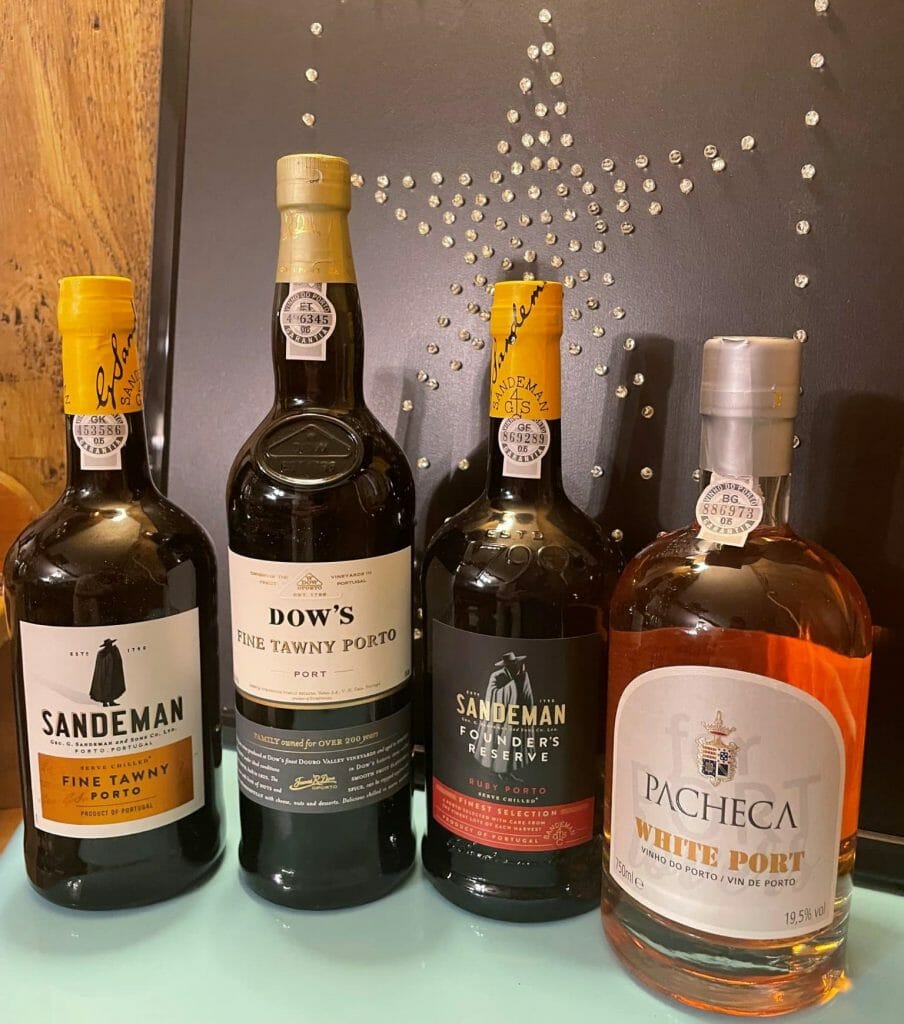
Vintage Port
If the harvest is exceptional, producers may declare a vintage, pending approval from the I.V.D.P. The bottle will display the harvest year, ensuring all its contents come from that specific vintage. After aging in barrels or vats for up to 2 ½ years, the wine is bottled with sediment from the remaining grape solids, allowing it to continue maturing. Most vintage ports age in the bottle for at least a decade, though some develop for much longer.
Late Bottled Vintage Port
Most often referred to as “L.B.V.,” a late bottled vintage port emerged during the 1960s when the popularity of Vintage Port lessened. Rather than being bottle-aged, producers left their wine in the barrel. Traditionally, L.B.V. port is bottled unfiltered, which results in a similar albeit more affordable alternative to vintage port. However, some producers have started filtering and fining L.B.V. Port before it is bottled. Traditionally, L.B.V. port is bottled unfiltered, which results in a more affordable alternative to vintage port. However, some started filtering and fining L.B.V. port before bottling.
Colheita Port
The term describes port wine that has spent a significant amount of time barrel-aging. Colheita Port must age for at least seven years, but it can spend decades aging in wooden barrels.
Crusted Port
Crusted Port combines several vintages and allows producers to create new flavors with a unique blend. Vintage and late bottled vintage varieties crusted port is bottled with sediment.
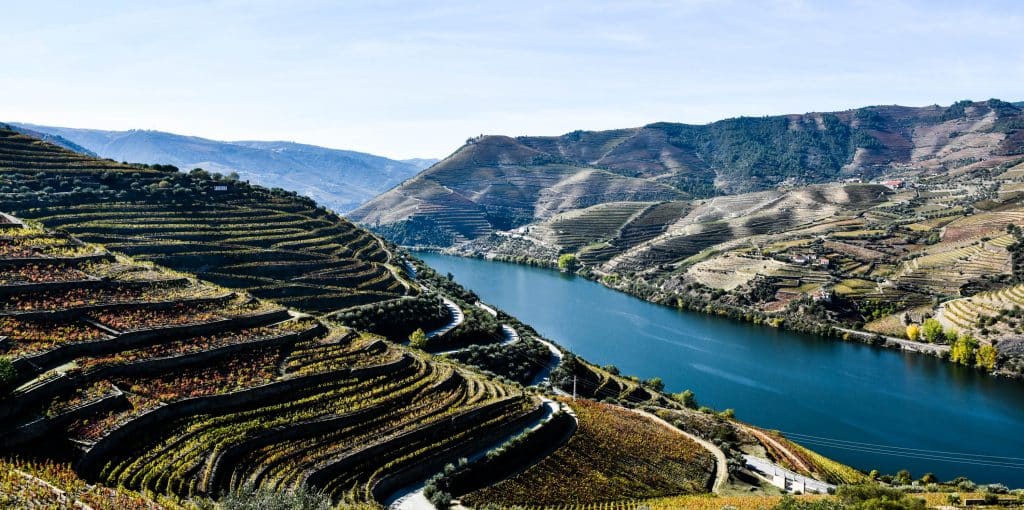
Region and Production
Port wine comes from grapes grown and processed in Portugal’s demarcated Douro region. To fortify the wine, producers add a neutral grape spirit called aguardiente, which halts fermentation, preserves residual sugar, and increases alcohol content. While sometimes referred to as brandy, this spirit differs significantly from commercial brandies. After fortification, the wine is aged, often in barrels stored in lodges—similar to cellars—in places like Vila Nova de Gaia before bottling. The name “Port” originated in the late 17th century, inspired by the seaport city of Porto at the mouth of the Douro River, where the wine was transported and exported across Europe.
Porto remained a key hub for Port wine distribution, while the Douro Valley was officially designated as a protected wine region in 1756. This made it the third-oldest wine appellation, following Chianti (1716) and Tokaj (1730).
The Douro Valley’s microclimate is ideal for cultivating olives, almonds, and especially grapes, which are essential for Port production. The area around Pinhão and São João da Pesqueira serves as the heart of Port wine-making, renowned for its stunning Quintas—vineyard estates perched on steep, terraced slopes. Despite its beauty, the region’s rugged terrain and scorching heat make vineyard labor incredibly demanding.
Wine Regions
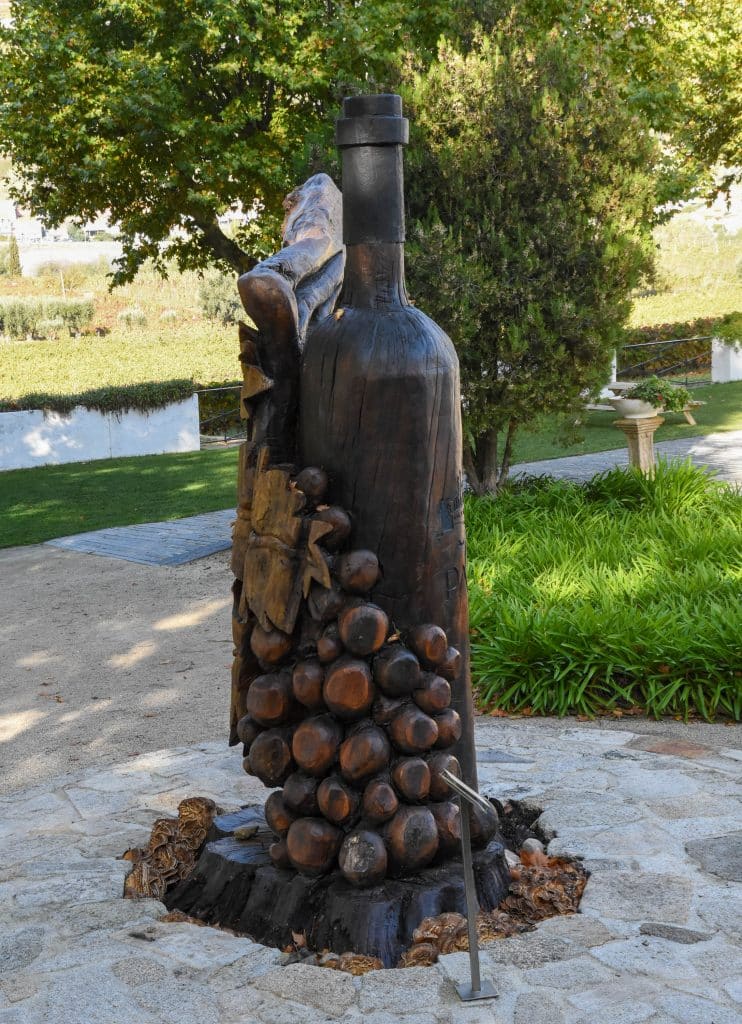
The Douro River Valley’s demarcated wine region spans a vast landscape of pre-Cambrian schist and granite, beginning near Barqueiros, 43 miles upstream from Porto, and stretching eastward toward the Spanish border. Shielded from Atlantic influences by the Serra do Marão mountains, the region is divided into three distinct zones: Baixo Corgo, Cima Corgo, and Douro Superior.
Baixo Corgo, the westernmost zone, lies around Peso da Régua and receives the most rainfall, averaging 35 inches annually. With the coolest climate, this area primarily produces grapes for affordable ruby and tawny Ports.
Cima Corgo, centered on Pinhão, experiences slightly higher summer temperatures and lower rainfall at 27 inches per year. Known for its superior grapes, this zone supplies wines for Vintage, Reserve, aged Tawny, and Late Bottled Vintage Ports.
The Douro Superior, the easternmost and driest zone, extends toward Spain. Its rugged terrain and rapids make cultivation challenging, but its flatter areas offer potential for mechanization.
What is the Main Grape Variety Used?
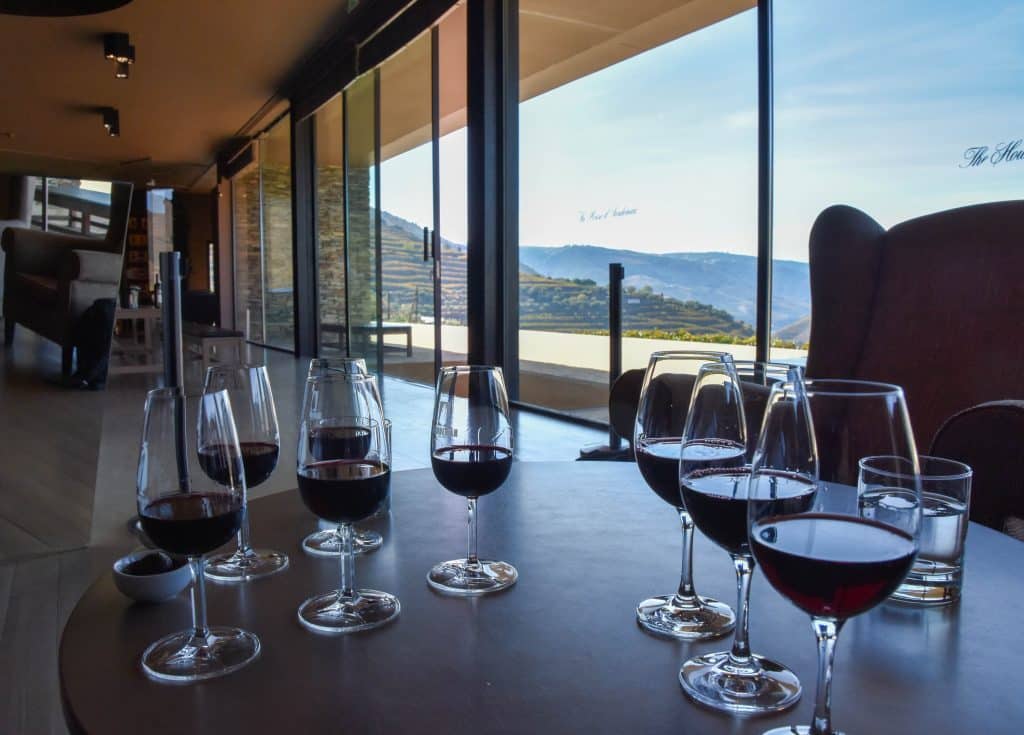
Port producers cultivate over a hundred sanctioned grape varieties (castas), but only five—Tinta Barroca, Tinto Cão, Tinta Roriz (Tempranillo), Touriga Francesa, and Touriga Nacional—dominate production. Winemakers highly value Touriga Nacional for its quality, but its challenging cultivation and low yields make Touriga Francesa the most widely planted grape.
White Ports follow the same production process as red Ports but use white grape varieties such as Donzelinho Branco, Esgana-Cão, Folgasão, Gouveio, Malvasia Fina, Rabigato, and Viosinho. While some producers experiment with single-variety Ports, all commercially available Ports come from blended grapes. Since the Phylloxera crisis, most vines grow on grafted rootstock, with the exception of Quinta do Noval’s Nacional vineyard, which has produced some of the most expensive vintage Ports since 1925.
Port grapes are known for their small, dense fruit, which delivers concentrated flavors ideal for long aging. The Instituto do Vinho do Porto strictly regulates the grape varieties used in Portuguese Port, but winemakers outside the region may use different grapes while still labeling their wines as Port.
Are you interested in visiting beautiful Portugal? Our Portugal Travel Guide can help you plan your next adventure.
The Character of Port

Port wine is typically richer, sweeter, heavier, and higher in alcohol content than unfortified wines. The addition of distilled grape spirits causes this. It fortifies the wine and halts fermentation before all the sugar is converted to alcohol, resulting in a wine usually with 19% to 20% alcohol.
Port from Portugal comes in several styles, divided into two categories: wines matured in sealed glass bottles and wines that have matured in wooden barrels.
Without exposure to air, the former experience what is known as “reductive” aging. This process leads to the wine losing its color very slowly and produces a smoother, less tannic wine on the palate.

The addition of distilled grape spirits makes Port wine richer, sweeter, heavier, and higher in alcohol than unfortified wines. This fortification stops fermentation early, preserving residual sugar and creating a wine with 19% to 20% alcohol content.
Portuguese winemakers classify Port into two main categories based on aging methods: wines matured in sealed glass bottles and those aged in wooden barrels. Bottle-aged Ports experience “reductive” aging, developing their character and complexity without air exposure.
The I.V.D.P. (Instituto dos Vinhos do Douro e Porto) further divides Ports into two categories: regular Ports (standard rubies, three-year-old Tawny, and white Ports) and Categorias Especiais, special categories, which include everything else.
How Best to Experience Port
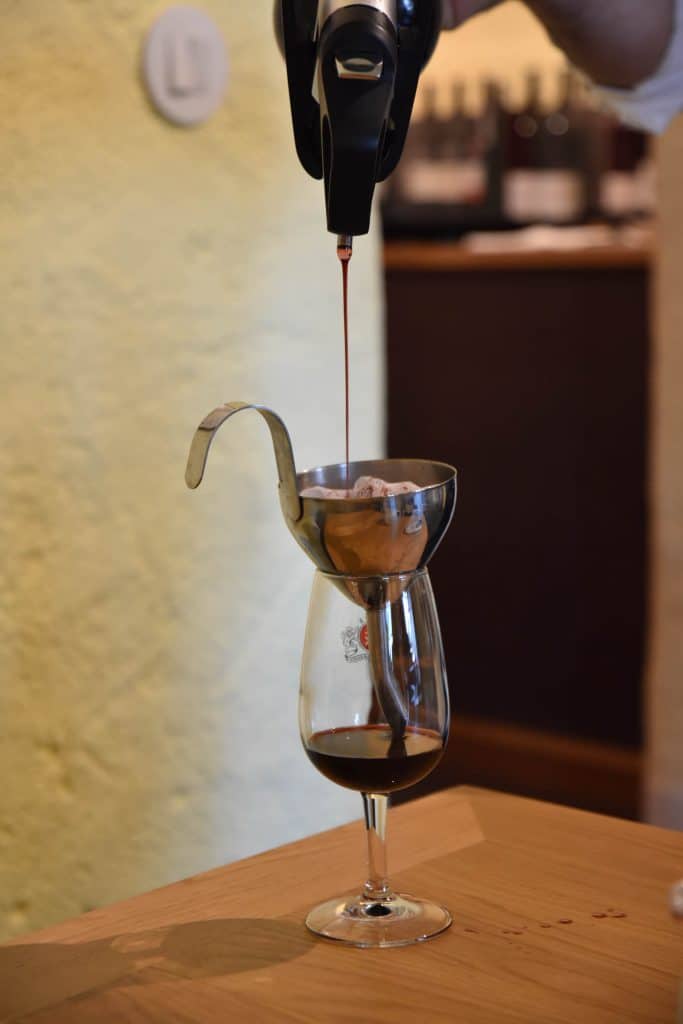
Port, like other wine, should be stored in a cool but not cold, dark location (as light can damage the Port), at a steady temperature (such as a cellar), with the bottle laid on its side if it has a cork, or standing up if it is stoppered. You can serve White Port cold, and you should serve between 15 and 20 °C (59–68 °F). Tawny Port may also be served slightly cooler.
Going to any vineyard is a great way to enjoy some beautiful scenery while doing some tastings. All our winery experiences in Duoro Valley were friendly and informative. There are plenty of Port Houses in Porto to visit while exploring this beautiful city; they are all just as welcoming and knowledgeable.

For the best experience, head to the Porto warehouse side of the river and tour one of the renowned Port Houses. Tickets are required, so booking in advance is wise, as many tours fill up quickly.
During our visit, we found ourselves lucky to secure a spot after a short wait. Our favorite was the Calem Port House, where we walked through its historic halls, learned about Port production, and explored the unique characteristics of different varieties. The highlight? A generous tasting at the end. We enjoyed it so much that we can’t wait to return and explore even more Port Houses.
What to Pair with Port
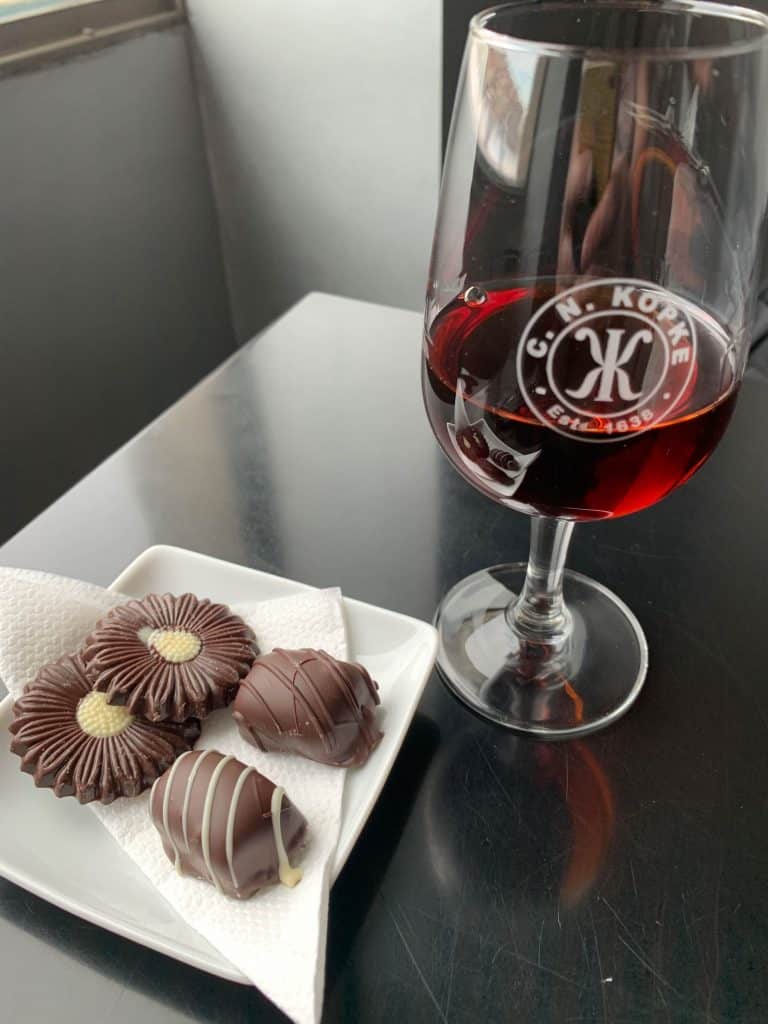
Most people serve Port after meals as a dessert wine in English-speaking countries. It pairs with cheese, nuts, or chocolate. As for White and Tawny Ports, they usually are served as apéritif. In Europe, all types of ports are frequently consumed as apéritifs. We feel there is no wrong time to enjoy such a tasty libation, even with a meal.
One of our favorite places in Portugal was the walled city of Obidos. Check out our blog post-Obidos: Portugal Perfection.
Taking Port Home
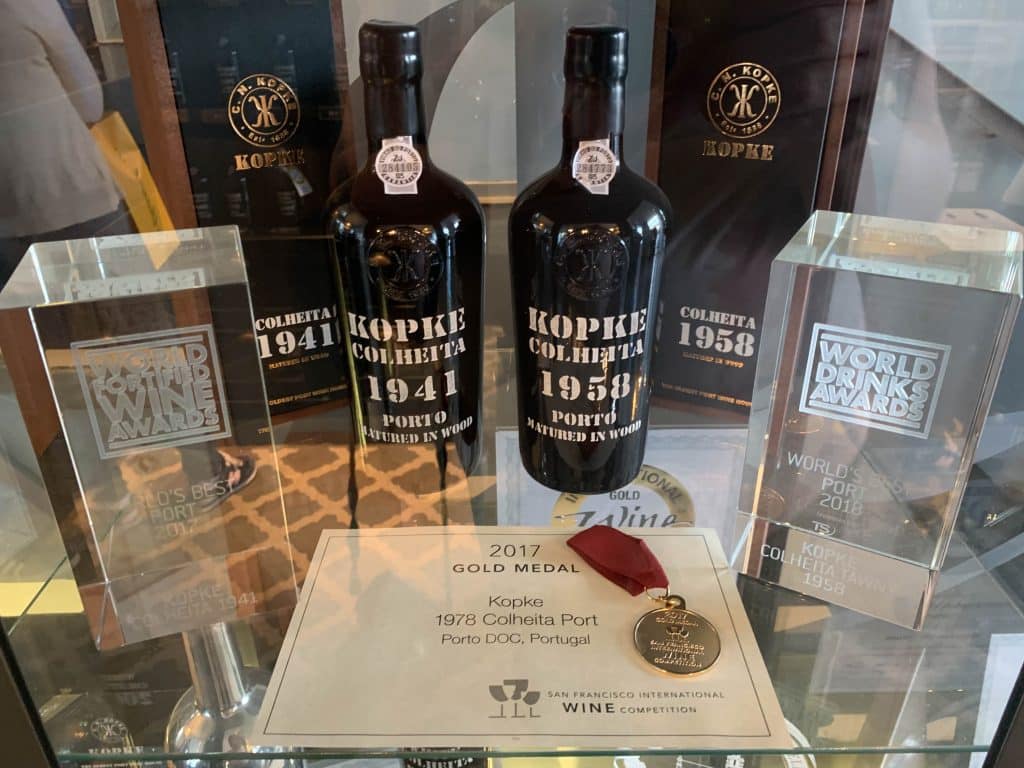
Though you can find an extensive collection of Ports back in your home country, the specific one you enjoyed during tastings in Portugal will not likely be there, especially ones with limited production. You should purchase any exceptional ones you enjoy when in Portugal. One of our regrets was not purchasing more.
Purchasing Port at Home
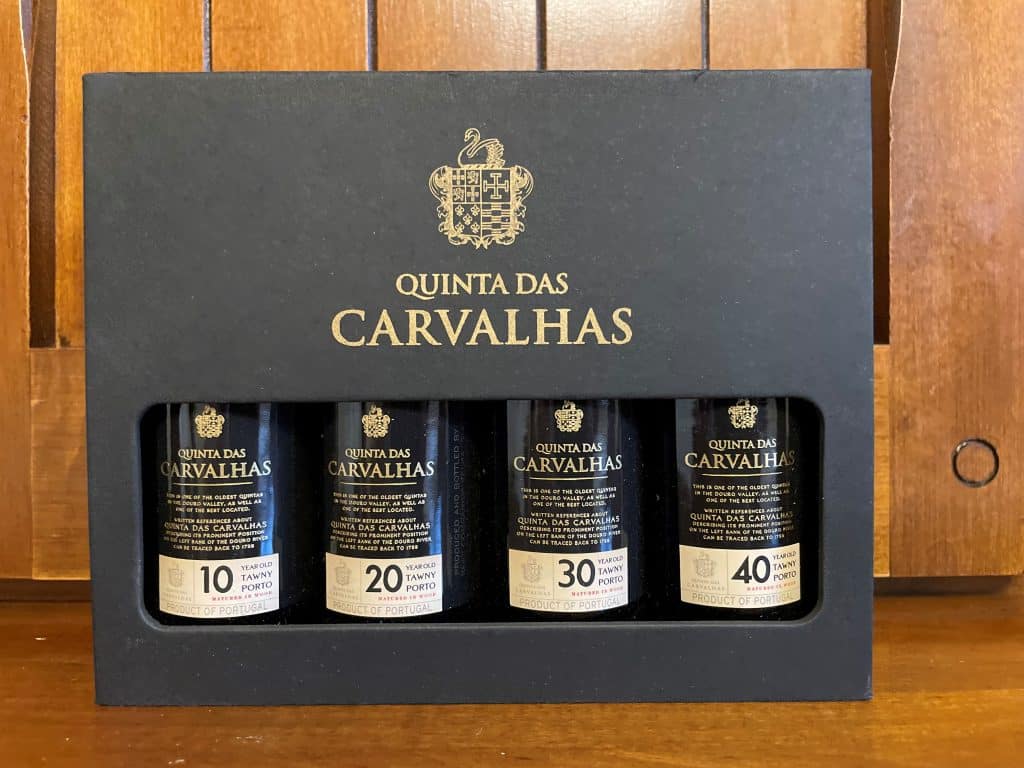
Port is widely available in quality liquor and wine stores around the world, often with impressive selections. However, expect a price jump compared to what you’d pay in Portugal, where high-quality Ports can be surprisingly affordable—making it worth stocking up while there.
We often buy Port from local liquor stores, and larger retailers like Total Wine usually carry a solid selection. If it’s not on the shelves, checking online or placing a special order might be an option. Even Costco offers a Kirkland-brand Port that delivers good quality at a great price.
We found a site called Wine-Searcher.com, which will search online sources worldwide for any wine, beer, or spirit. They have an extensive Port collection online. If your state allows it, they will ship to your home.
May we Suggest a Few of Recipes to Expand your Port Experience?
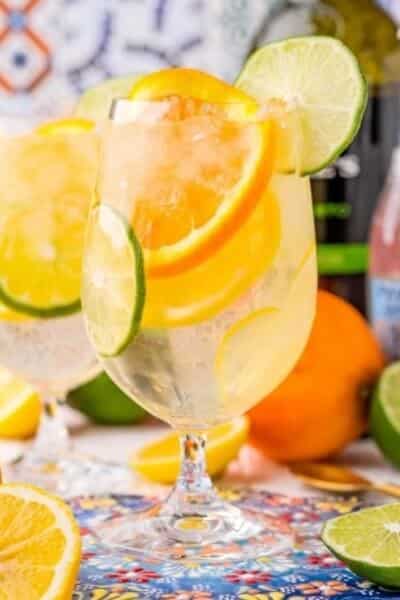
Refreshing and Tangy
Port and Tonic
Ingredients
4 ounces White Port Wine
8 ounces of tonic water
1 orange slice
2 lemon slices
2 lime slices
Ice
Add ice to a tall glass. Add the sliced fruits. Pour the White Port wine. Stir gently while pressing the fruits so some juice is released. Pour in the tonic water and stir.
Adapted from Wine Lover Magazine
Classic and Elegant
Porto Negroni
Ingredients
1 ounce Tawny Port
1 ounce of Gin
2 Tbsp Campari
Fresh orange Zest
Ice
Add ingredients to a cocktail shaker with ice. Stir for several seconds and strain into an old-fashioned glass over 2 ice cubes. Garnish with orange zest.
Recipe adapted from Portcocktails.com
Delicious Ruby Gem
Portuguese Daisy
Ingredients
2 ounces Ruby Red Port Wine
1 ounce of Brandy
2 Tbsp Fresh Lemon Juice
1 tsp of Simple Syrup
1 tsp Grenadine
Orange Slice
Ice
Combine all ingredients into a cocktail shaker with ice. Shake for 20 seconds. Strain into a chilled glass and serve. Garnish with an orange slice.
Fabulous and Creamy
Valentino’s Delight
Ingredients
2 Tbsp Ruby Port
1 1/2 ounce bourbon
2 Tbsp Coffee liquor
1 1/2 ounces of heavy cream
Chocolate sprinkles
Crushed Ice
Combine all ingredients with the crushed ice into a cocktail shaker. Shake until the shaker gets cool—strain into a chilled Martini glass. Sprinkle on the chocolate sprinkles.
Adapted from Wine Lover Magazine

Where to Stay When Visiting Porto or Duoro Valley
Our recommendation is to stay as close to the river as possible in either location. The region revolves around the river, which is the heart of the Port region.
It is important to price out accommodations on various sites. Expedia is a US-based company, whereas Booking.com is Europe-based. Not all properties appear on both, so it is ideal to check both out. Our personal first choice is Booking.com. If the establishment has a website, check the price there as well. Click the link below to check out hotels and vacation homes in the area. It may be just the motivation you need to start planning that next grand adventure.
© 2025 Wanderers Compass All Rights Reserved
Our Port Photo Gallery






















© 2023 Wanderers Compass All Rights Reserved
Learn more about Portugal. Check out Portugal’s Official Tourism Site.
Check out our most recent blog posts
Want to learn about Wanderers Compass?
Our Top Recommended Travel Products
Travel Insurance
Squaremouth.com
Our favorite travel insurance site!
We strongly advocate for comprehensive travel insurance, not only for minor inconveniences but also for major, unexpected events like medical emergencies. We never leave home without it. Our go-to resource is Squaremouth.com. which offers a user-friendly platform that connects you with top-rated, reputable insurance carriers. Plus, they’ll mediate on your behalf if you run into any issues.
To empower you as a consumer, we recommend you read our blog post on why travel insurance is essential and how to secure the best coverage from leading companies at an affordable price.
MedjetAssist
Medical transport back home from anywhere in the world
Medjet is a leading provider of global air medical transport. Unlike traditional travel insurance, which typically covers medical evacuation to the nearest facility, Medjet goes further by ensuring you’re transported back to the U.S. to the hospital of your choice once you’re stable enough to fly. Medjet offers membership plans that focus on medical transport, while Medjet Horizon provides expanded coverage for broader protection. Individual trip policies start at just $99, and annual policies are available for around $300. Most policies have an age limit of 74.
To learn more about how Medical Evacuation membership with Medjet Assist works, check out our blog post for a more detailed review.
Accommodations and Airfare
Booking.com
Hotels, Home rentals, BNBs, Flights, and other Transportation & Tours
Booking.com connects millions of travelers to unforgettable experiences, a wide range of transportation options, and incredible places to stay—from homes to hotels and beyond. As one of the world’s largest travel marketplaces, it supports well-known brands and entrepreneurs of all sizes. For its convenience, variety, and reliability, it’s our preferred booking platform.
Transportation
Expedia and VRBO
Hotels, home rentals, BNBs, flights, and other transportation & tours
Expedia is a U.S.-based company with a mission to make global travel accessible to everyone, everywhere. At Wanderers Compass, we embrace independent travel, and platforms like Expedia are essential to making that a reality. Expedia allows you to book every aspect of your trip—from flights and accommodations to rental cars, cruises, and activities—making it a one-stop shop for all your travel needs.
Daytrip
Personalized city-to-city private car transfer service
Daytrip provides an affordable private car service for city-to-city transfers worldwide, and we absolutely love their service. It’s a cost-effective alternative to renting a car, providing comfortable, stress-free travel with the bonus of scenic stops along the way. For example, we used Daytrip for travel between Budapest and Vienna, enjoying some fantastic detours to local attractions. With professional drivers and customizable routes, Daytrip ensures a smooth ride while allowing you to explore hidden gems and unique sights along your journey.
To learn more about how Daytrip, check out our blog post for a more detailed review.
Travel Experiences
Viator
The leading marketplace for travel experiences
Viator believes that travel is all about creating unforgettable memories. With over 300,000 experiences to choose from—ranging from simple tours to extreme adventures, plus a wide array of unique, niche activities—it’s never been easier to make lasting memories. We frequently use Viator during our travels and especially appreciate their flexible cancellation policy, which adds peace of mind to every booking.
Communication products for seamless connectivity overseas
GigSky International eSIM Data Plans
Local Prices. No Roaming. Fastest Networks.
GigSky eSIM effortlessly connects travelers around the globe, eliminating the need to swap physical SIM cards or deal with surprise roaming charges. With affordable data plans and instant activation, you can enjoy reliable internet access in over 190 countries, making your travel experience more convenient than ever. Plus, they offer a fantastic deal: a free 100 MB data plan with no credit card required. They are so confident that you will love their service!
Enjoy 10% off all GigSky Plans (except cruise and inflight) with our discount code WCOMPASS10.
To learn more about how GigSky works, check out our blog post for a more detailed review.
Shopping
Wanderers Compass Amazon Storefront
An excellent source for all travel essentials and guides that we have vetted ourselves
Amazon is one of the world’s most comprehensive online shopping platforms, offering lower prices, a wide selection, and fast delivery through teams worldwide.
This page contains affiliate links. When you purchase through these links, we may earn a small commission at no extra cost to you. Thank you for your ongoing support!











